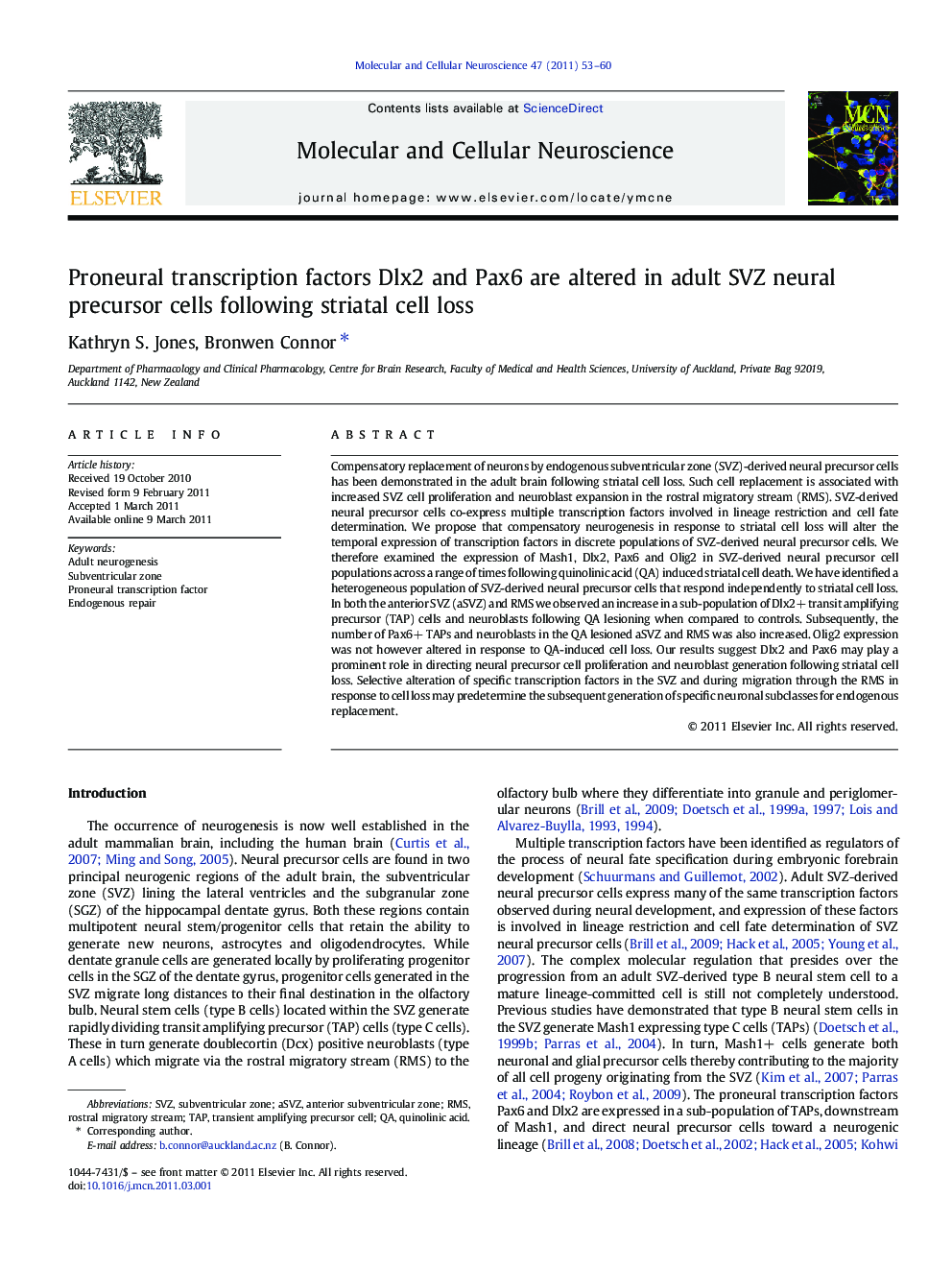| Article ID | Journal | Published Year | Pages | File Type |
|---|---|---|---|---|
| 2198730 | Molecular and Cellular Neuroscience | 2011 | 8 Pages |
Compensatory replacement of neurons by endogenous subventricular zone (SVZ)-derived neural precursor cells has been demonstrated in the adult brain following striatal cell loss. Such cell replacement is associated with increased SVZ cell proliferation and neuroblast expansion in the rostral migratory stream (RMS). SVZ-derived neural precursor cells co-express multiple transcription factors involved in lineage restriction and cell fate determination. We propose that compensatory neurogenesis in response to striatal cell loss will alter the temporal expression of transcription factors in discrete populations of SVZ-derived neural precursor cells. We therefore examined the expression of Mash1, Dlx2, Pax6 and Olig2 in SVZ-derived neural precursor cell populations across a range of times following quinolinic acid (QA) induced striatal cell death. We have identified a heterogeneous population of SVZ-derived neural precursor cells that respond independently to striatal cell loss. In both the anterior SVZ (aSVZ) and RMS we observed an increase in a sub-population of Dlx2+ transit amplifying precursor (TAP) cells and neuroblasts following QA lesioning when compared to controls. Subsequently, the number of Pax6+ TAPs and neuroblasts in the QA lesioned aSVZ and RMS was also increased. Olig2 expression was not however altered in response to QA-induced cell loss. Our results suggest Dlx2 and Pax6 may play a prominent role in directing neural precursor cell proliferation and neuroblast generation following striatal cell loss. Selective alteration of specific transcription factors in the SVZ and during migration through the RMS in response to cell loss may predetermine the subsequent generation of specific neuronal subclasses for endogenous replacement.
